Equipment
1. Chemistry laboratory
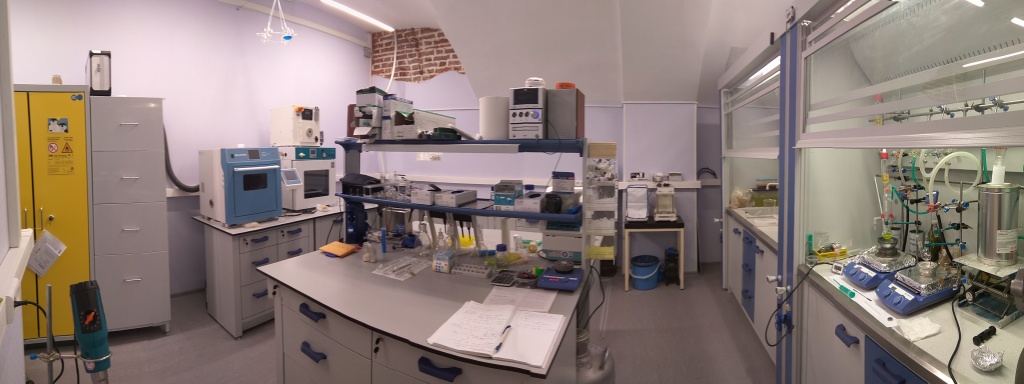
The only fully equipped chemistry laboratory at ITMO University for the synthesis of nanomaterials and nanocomposites, namely functional materials based on semiconductor and metal nanocrystals for applications in optical imaging and sensing, lasers, solar cells, light-emitting diodes, nanocrystal-based electronics, bio- and chemo-sensing, and theranostics.
2. Microscopy
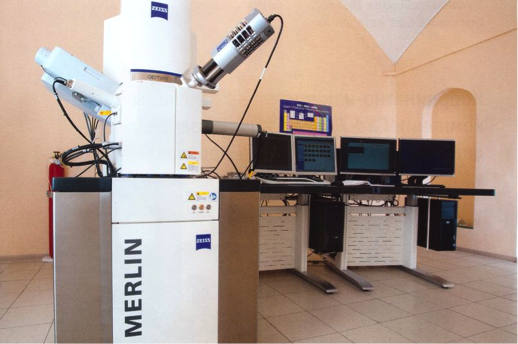
|
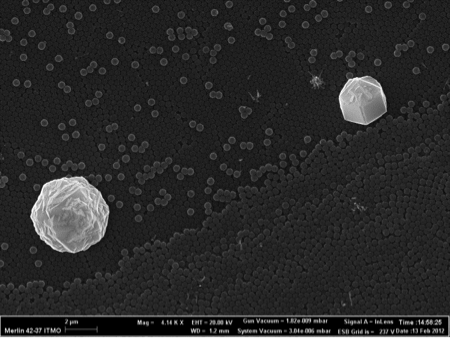
|
The electron microscope Merlin (Carl Zeiss) is intended for visualization, analysis of crystalline surface structure, and chemical composition analysis. Equipped with the Oxford Instruments Nanoanalysis system, Merlin provides maximum analytical possibilities. The EDX spectrometer with high sensitivity and spectral resolution (Inca Energy X-Max), EBSD system (HKL), and WDS spectrometer (Inca Wave) are combined with the newest analytical system AZTEC, which allows microanalysis with ultrahigh spatial resolution (to 0.6 nm) and unique material contrast.
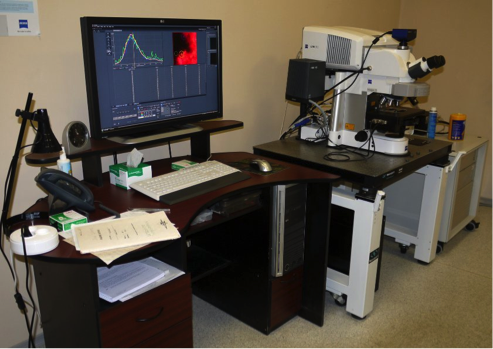
|
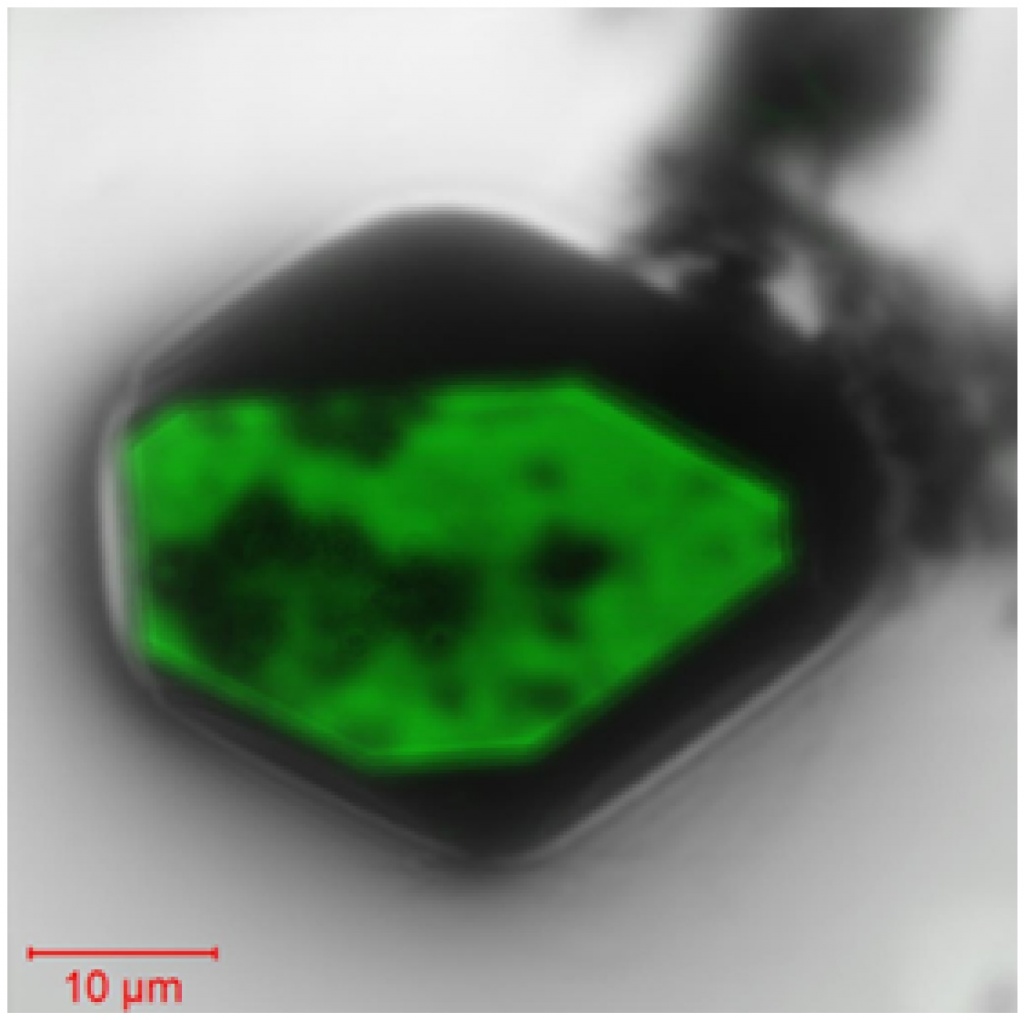
|
The confocal laser scanning microscope LSM 710 (Carl Zeiss) is intended for 3D optical and fluorescence visualization with the maximum possible spatial resolution. The LSM 710 allows layer-by-layer spectral analysis in the VIS. The revolutionary concept is realized in the laser excitation system: LSM 710 uses pigtailed lasers directly on the scanning head.
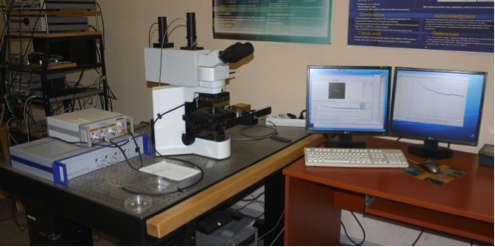
|
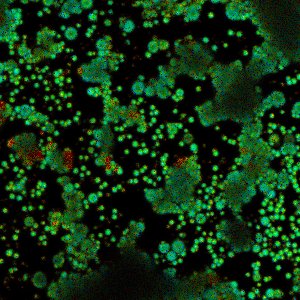
|
The laser scanning luminescence microscope MicroTime 100 (PicoQuant) is intended for the analysis of photoluminescence decay. MicroTime 100 allows optical visualization, 2D luminescence mapping, and 2D luminescence decay times mapping. The combination of a microscope system with time-correlated single photon counting technique provides both ultrahigh spatial and temporal resolution.
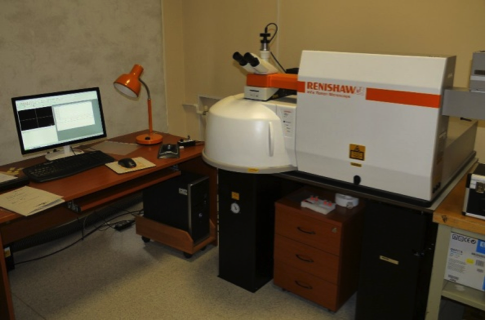
|
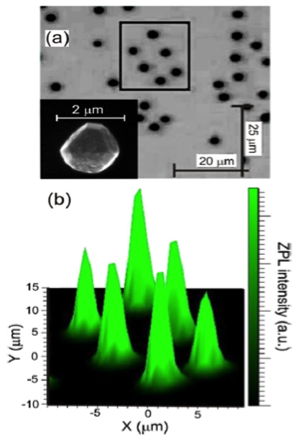
|
The confocal Raman microscope InVia (Renishaw) is intended for the analysis of chemical composition, internal structure, and mechanical strain with diffraction-limited spatial resolution. The InVia allows to obtain 2D and 3D maps of Raman scattering, which permit analyzing spatial distribution of compounds, stress, defects, etc.
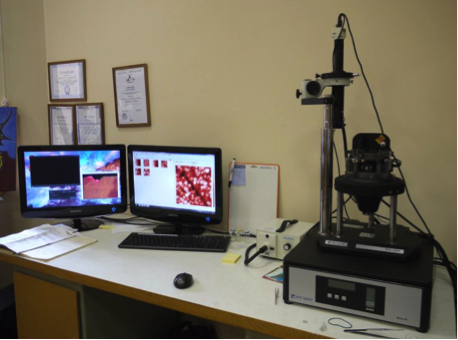
|
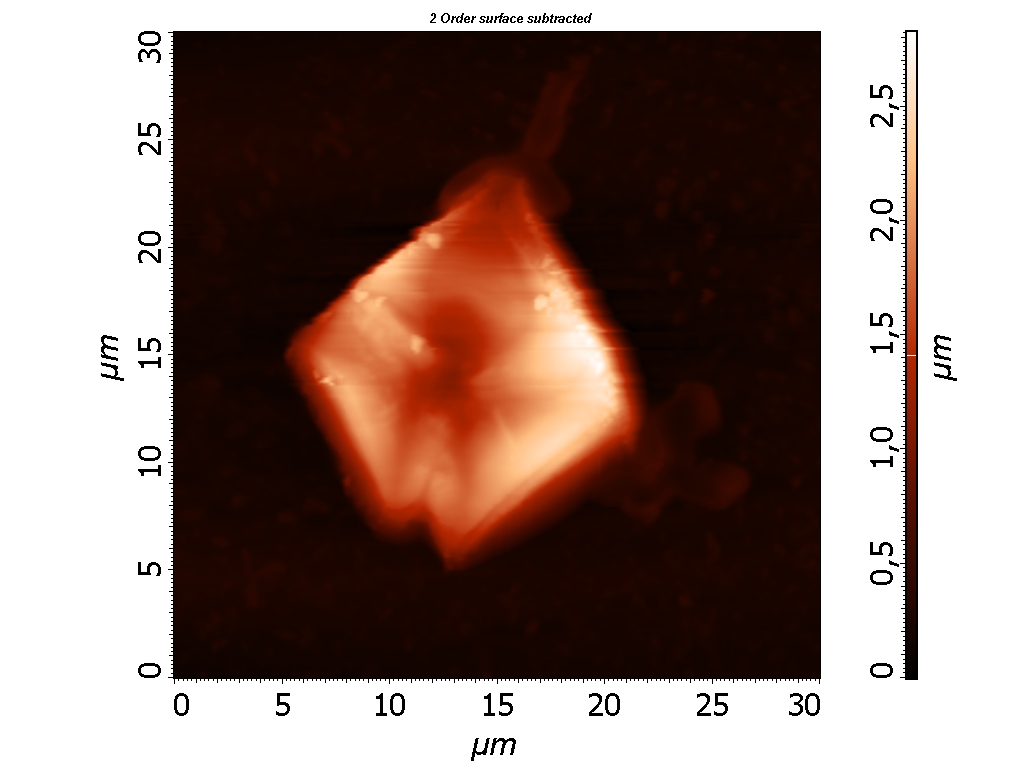
|
The scanning atomic force microscope Solver Pro-M (NT-MDT) is intended for the visualization of both conductive and nonconductive nanostructures with spatial resolution up to 0.1 nm. Special measuring techniques allow the investigation of magnetic, conductive, and mechanical properties of samples at the nanoscale.
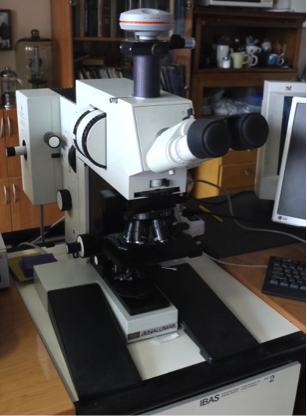
|
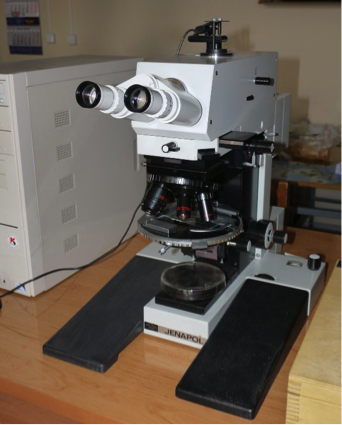
|
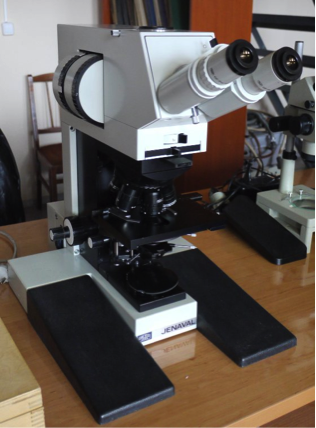
|
The classical optical microscopes JenaVal, JenaPol, JenaLumar (Carl Zeiss) are intended for the analysis of optical properties of various structures, including their luminescence and polarization.
3. Spectroscopy
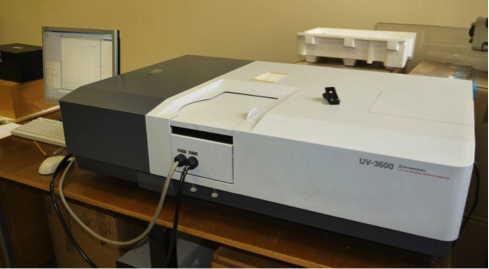
|
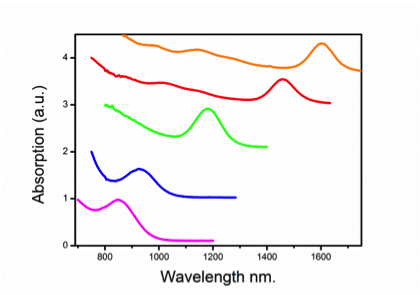
|
The Spectrophotometer UV-3600 (Shimadzu) is intended for the measurements of optical density of both liquid and solid samples in extremely wide spectral range from 0.2 to 3 µm. UV-3600 combines high sensitivity with excellent signal-to-noise ratio.
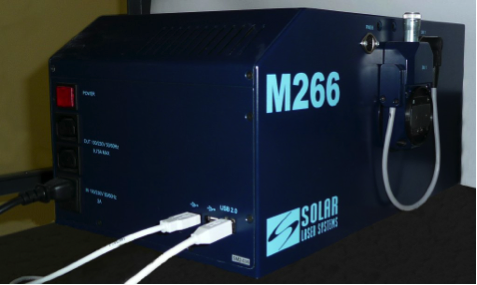
|
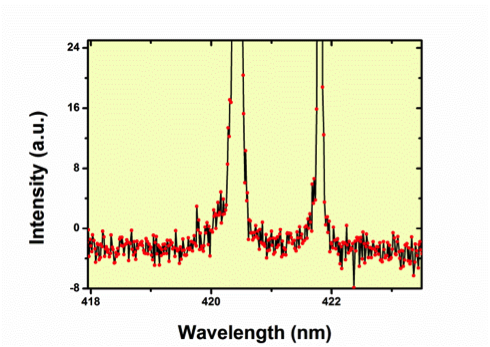
|
The Automated Monochromator and Spectrograph M266 (SOLAR Laser Systems) is a compact, versatile, high performance instrument for use as a monochromator and/or true flat field spectrograph. It has excellent throughput and low stray light. Two automatically switched output ports allow two detectors to be simultaneously attached to the M266, and the whole system can be controlled from a PC via only one USB-cable of High-Speed USB interface.

|
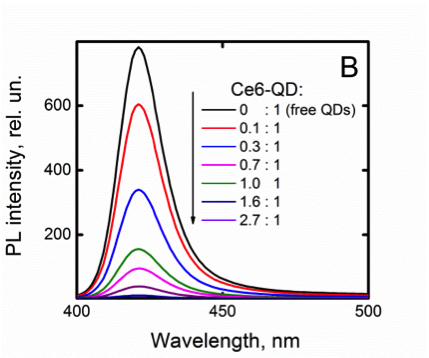
|
The fluorescence spectrofluorimeter Cary Eclipse (Eclipse) is intended for analysis of fluorescence, phosphorescence and chemiluminescence.
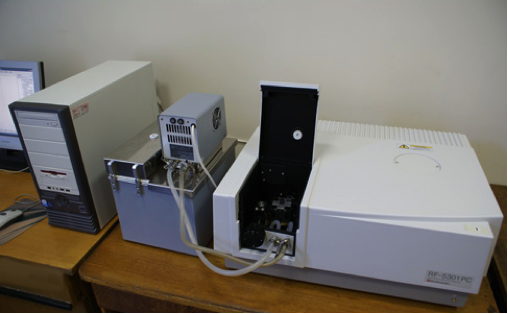
|
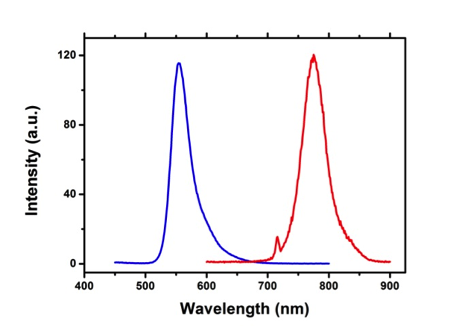
|
The RF-5301PC Spectrofluorophotometer (Shimadzu) is a basic fluorescence instrument capable of both excitation and emission spectral scans from 220-900 nm. It has a wavelength accuracy of 1.5 nm, selectable bandwidth for both excitation and emission, and variable scan speeds. A kinetics mode is also available. The high-throughput optical system in the RF-5301PC allows the measurement in seconds, and the narrow bandpass makes it possible to distinguish fluorescent peaks from excitation wavelengths. The Windows-compatible, full-featured Panorama software for the RF-5301PC enables multi-component sample analysis and provides three-dimensional spectral plots to facilitate a wide range of life science and environmental applications.

|
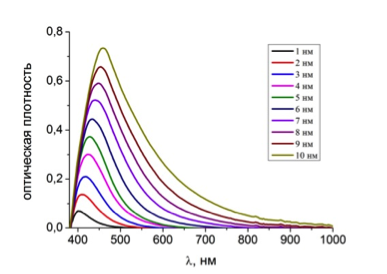
|
The Photonic Multichannel Analyzer РМА-12 (Hamamatsu) is compact spectral measurement apparatus that combines a spectrometer and optical detector into one unit. An optical fiber is used. Because of the high sensitivity, spectra can be obtained easily just by bringing the optical fiber close to the sample in normal applications, without a special light collection system. Since the spectrometer and photo-detector are fixed, the PMA-12 is stable and can be used with confidence for long periods of time.
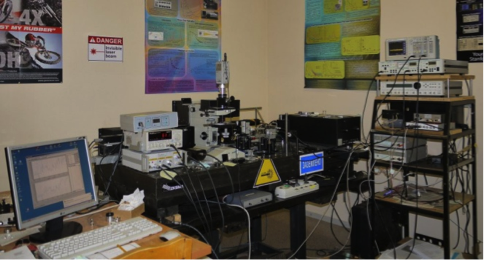
|
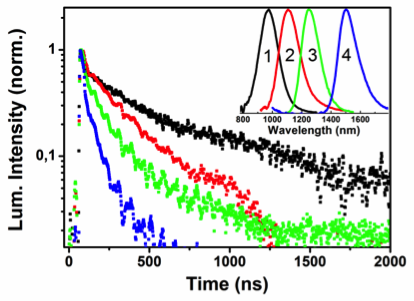
|
A complex for photoluminescence analysis in the NIR allows investigation of both photoluminescence spectra and photoluminescence decays with high time and spectral resolution. Purpose-built software for results accumulation provides sufficient signal-to-noise ratio even in case of weak signal detection.
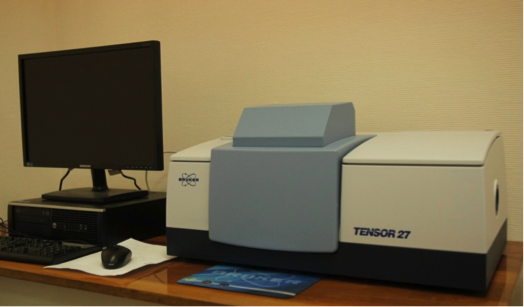
|
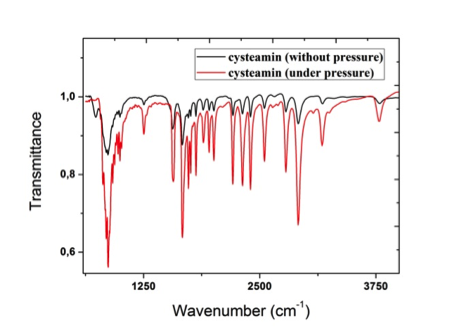
|
The Tensor 27 (Bruker) is intended for FTIR analysis in the spectral range of 4000–400 cm-1. Equipped with a room temperature DTGS detector, MID-IR source and a KBr beamsplitter, it provides spectral resolution up to 1 cm-1. The option to connect external accessories opens almost unlimited sampling capabilities.
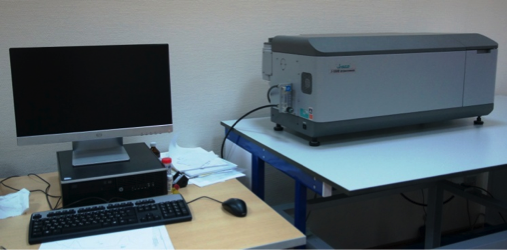
|
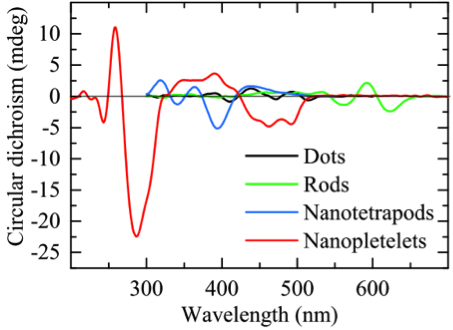
|
The JASCO J-1500 (JASCO) is designed for comprehensive circular dichroism analysis, since one spectrometer can measure CD, LD, and absorbance. A wide range of additional modes include Fluorescence, Fluorescence Detected CD, Fluorescence Detected LD, Fluorescence Polarization/Anisotropy, Optical Rotatory Dispersion, Magnetic CD, Stopped flow CD/Abs/Fluorescence and more. Accessories MCD-581 and PM-491 for measurements in variable (1.5 Т) and constant (1.6 Т) magnetic field, respectively, are available.
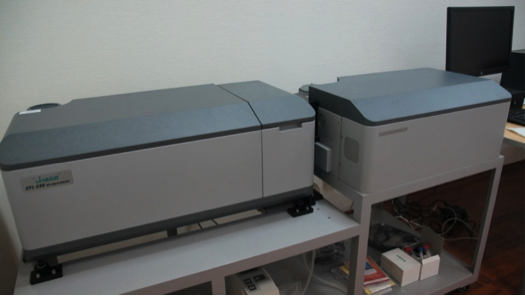
|

|
The JASCO CPL-300 (JASCO) is intended for the analysis of fluorescence of chiral samples. CPL-300 is composed of the two monochromator units, Mex and Mem. The Mex unit generates the monochromic depolarized natural light and irradiates to the sample, while the Mem unit occurs the functions such as a circularly-modulation, polarization, monochromator, and photomultiplier tube. This sequence of optical elements makes both the CPL spectra and the fluorescence spectra of chiral samples. Accessory PM-491 for measurements in constant (1.6 Т) magnetic field is available.
4. Laser systems
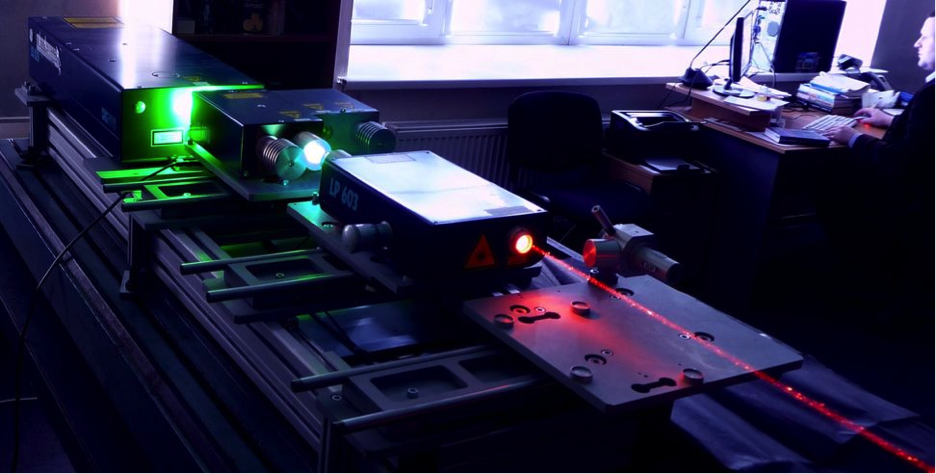
Laser system SOLAR with tunable wavelength is based on a pulsed Nd: YAG-laser with output power up to 200 megawatt, equipped with nonlinear frequency converter to the second and third harmonics, parametric light generator with range of 210 ... 2500 nm. Operation are free-running lasing and Q-switched (pulse width is 10 ns) in single-pulse or frequency mode.

Set of semiconductor lasers and laser diodes TOPTICA lasing in the UV, visible and IR regions of the spectrum. External cavity lasers allow obtaining a powerful generation in the specified region with fine-tuning in the range of several GHz.
5. Technological equipment
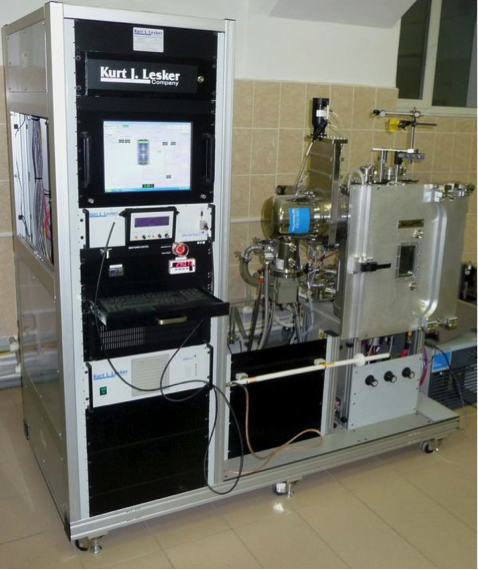
|
Physical vacuum deposition system PVD 75 (Kurt J. Lesker, USA) for the creation of surface nanostructures. Features:
- volume of the stainless steel chamber - 75 L
- base pressure criogenic pump - 5x10-7 Torr
- electron beam evaporation
- thermal evaporation (5 kW)
- system Control is PC-Based HMI, with recipe control and datalogging
- two quartz windows for optical measurement and control of deposition processes
6. Langmuir film balance and Langmuir-Blodgett trough
The Langmuir film balance and Langmuir-Blodgett trough with symmetric barrier compression KN 2002 (KSV NIMA) are used to fabricate and characterize monomolecular and monoparticulate films with precise control of lateral packing density. Following characterization studies of the unique properties of molecules or nanoparticles in monolayers at the air-water interface, the instruments can be used to transfer these monolayers using the Langmuir-Blodgett or Langmuir-Schaefer deposition technique. This enables the creation of single and multi-layer films with precise control of thickness, molecular orientation and packing density.
7. Supercomputer
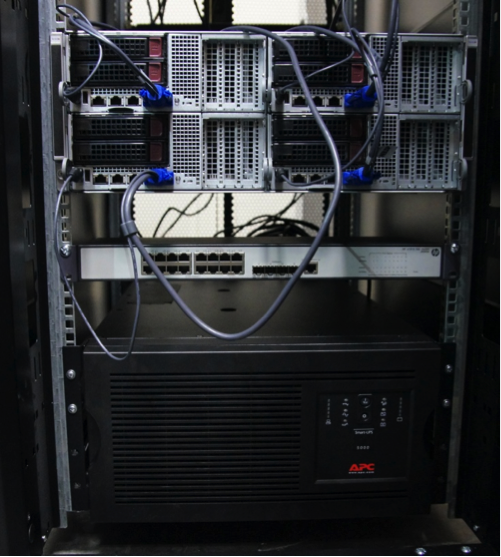
The system platform SUPERMICRO is dedicated to numerical simulations of anisotropic and optically active nanostructures. The supercomputer allows for more detailed numerical calculations of anisotropic and chiral properties of quantum nanostructures of various dimensions, chiral organic molecules, and hybrid structures based on quantum nanocrystals and organic molecules. These calculations significantly expand the range of research and educational process in the field of photonics and optoinformatics.